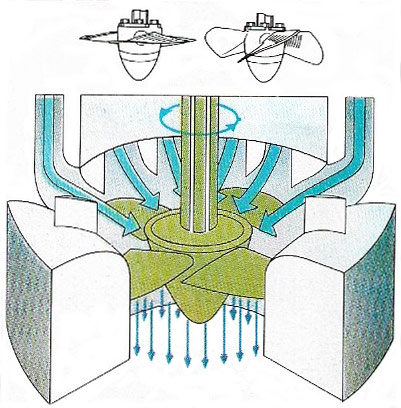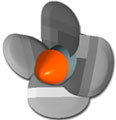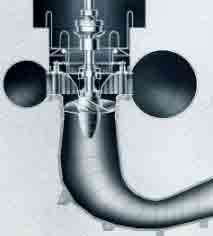Kaplan turbine

The blades on the Kaplan axial-flow turbine resemble a ship's propeller.
A Kaplan turbine is a type of water turbine, developed around 1915 by the Austrian engineer Viktor Kaplan (1876–1934), that has two or more blades, the pitch of which is adjustable; it resembles a marine propeller. The turbine may have gates to control the angle of the fluid flow into the blades.
 |
Kaplan turbines are well suited to situations in which there is a low head and a large amount of discharge. The adjustable runner blades enable high efficiency even in the range of partial load, and there is little drop in efficiency due to head variation or load.
 |
| Kaplan turbine schematic. |
As a result of recent developments, the range of Kaplan turbine applications has been greatly increased. They are being applied, for example, in exploiting many hydro sources previously discarded for economic or environmental reasons, and have also been used as wind turbines. The adjustable runner blades add to the complexity of construction of a Kaplan turbine. The runner blade operating mechanism consists of a pressure oil head, a runner servomotor, and the blade operating rod inside the shaft.
Compare with the Francis turbine and the Pelton turbine.
